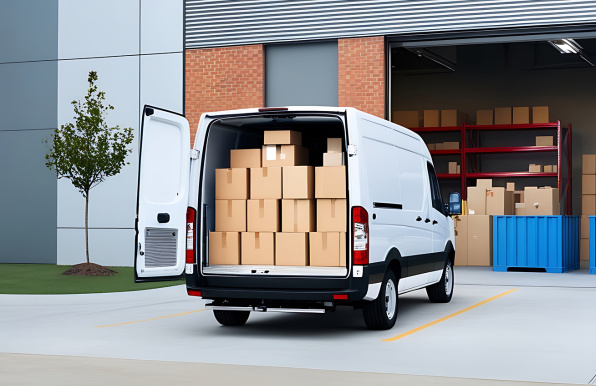- Last-Mile
- Customer Experience
- Visibility
- Track
- Experience
Technology on the forefront of last-mile delivery at Manifest 2022
Manifest 2022 brought together industry executives, entrepreneurs and investors, focused on the current state of logistics and supply chain. Conference buzz centered on a variety of topics. What does the future of supply chain look like? What technology do we need to gain real-time visibility? How do we strike a balance between consumer experience and cost to serve?
Consumer Experience, Control and Costs
Last-mile delivery is really the only touchpoint between a retailer and the end customer. The delivery determines the consumer’s experience with a brand. Thanks to the Amazon effect, consumers want to choose how and when they receive a delivery. They want to be able to change the delivery time if needed and really be in control of how their order gets to their doorstep.
There are three costs associated with the customer experience that retailers must consider; the cost of delivery, the cost of speed and the cost of a bad experience. All three need to be considered to improve customer experience.
Retailers must invest in the cost of delivery. Today’s consumers want their orders quickly, but they don’t want to pay for it. The cost of speed also defines the customer experience. Shoppers will leave a retailer if they can’t offer the same speed of delivery as their competitors. Finally, there is the cost associated with a bad customer experience. A single bad experience can potentially mean losing a customer and their lifetime value to the brand.
How important is end-to-end visibility?
In the supply chain, the cost of data has decreased dramatically over the past few years. Companies now have an option to more accurately know where a shipment is along its journey. End-to-end visibility optimizes and improves efficiencies throughout the logistics ecosystem.
Supply chain operations for many companies may be managed and exist in silos. Each stage of the journey from warehouse to distribution center to last-mile delivery may be using different systems. They may not be connected and may not be able to show exactly where a product is. Using technology to connect those systems and provide visibility through all of the steps of a product’s journey from order to consumer is key.
With real-time visibility, brands now have an option to know where a shipment is more accurately and if that order will be on time. With visibility, a brand can track an order, measure its delivery performance and improve it. Visibility is essential to both a brand and the end consumers, who increasingly demand to know where their packages are, and when they will be delivered.
How can visibility be actionable?
Connecting multiple siloed systems through technology solutions is the key to creating end-to-end visibility. From a consumer’s perspective, when they order a product, they want a specific delivery date and time slot. How does a brand predict what time they will be able to deliver that product? You must have real-time visibility in order to determine where a product is and if you will be able to offer delivery time slots. Predictability is based on visibility.
Visibility is great, but how can it be made actionable? With real-time visibility, if a brand is aware of exceptions for a delivery, they can make changes. Having that information allows them to be proactive and make decisions that impact both the financial bottom line and the end consumer’s satisfaction. Having real-time visibility and being able to make actionable decisions is the future of supply chain operations.
Here's an another nugget: The last-mile holy grail: superior customer experiences, cost control & improved sustainability
Supply Chain and Logistics in the Future
We are living in an era where it’s less about what you deliver and more about how you deliver it. It’s about cost, convenience and ultimately about the end consumer’s experience. Today, every company needs to be a logistics or transportation company, irrespective of the business you are in.
A brand needs to own the experience of the consumer and to do that, every brand needs to be a transportation or logistics company. It doesn’t matter if you own your own fleet or utilize a carrier network. As long as you have technology solutions that connect the various systems and allow them to flow seamlessly, that is the key.
Supply chains are in the forefront of every brand’s consciousness. Much goes on behind the scenes of each brand’s supply chains, which should begin with technology and provide real-time visibility to enhance the end consumer’s experience.
FarEye helps companies orchestrate, optimize and provide a superior last-mile delivery to the end consumer. Click here to book a call to learn more about upping your last mile game.

Komal Puri is a seasoned professional in the logistics and supply chain industry. As the AVP of Marketing and a subject matter expert at FarEye, she has been instrumental in shaping the industry narrative for the past decade. Her expertise and insights have earned her numerous awards and recognition. Komal’s writings reflect her deep understanding of the industry, offering valuable insights and thought leadership.
Let's Talk to Our Experts and Optimize Your Deliveries Today!
An expert from our team will reach out within 24 hours



